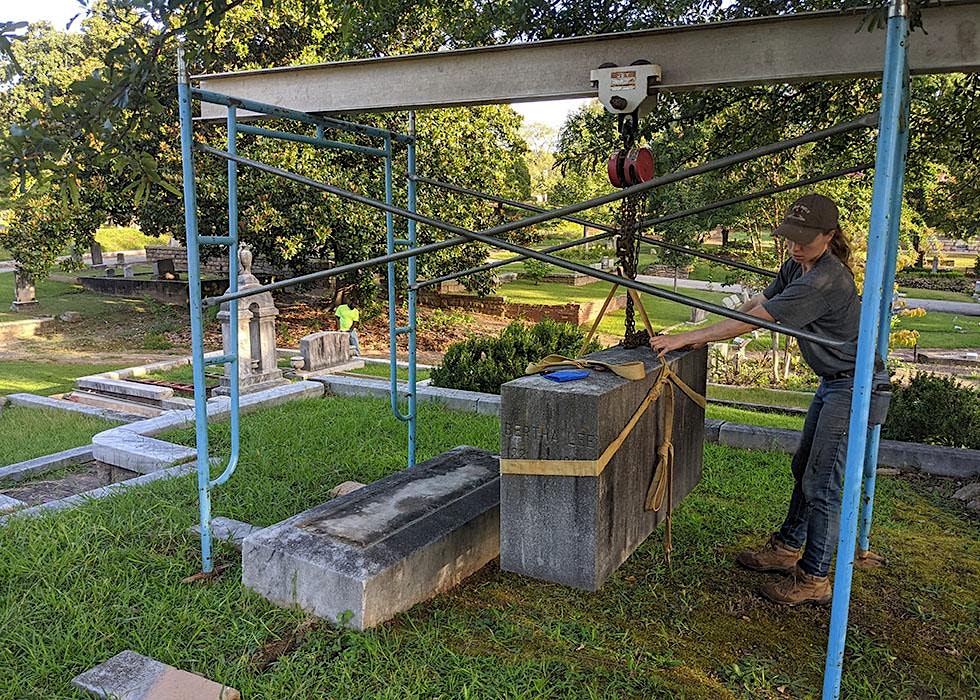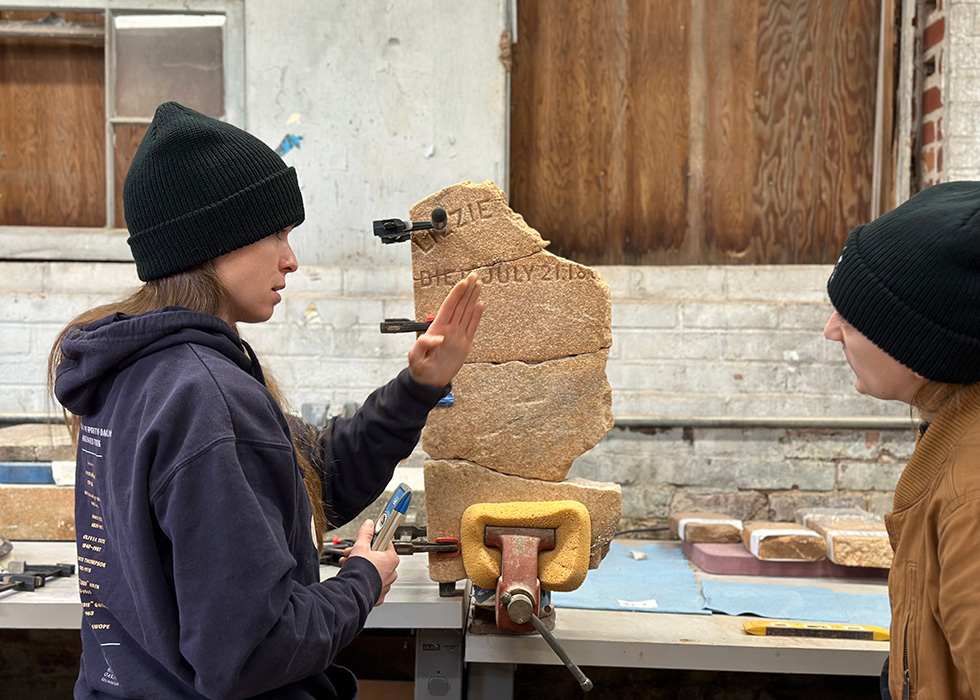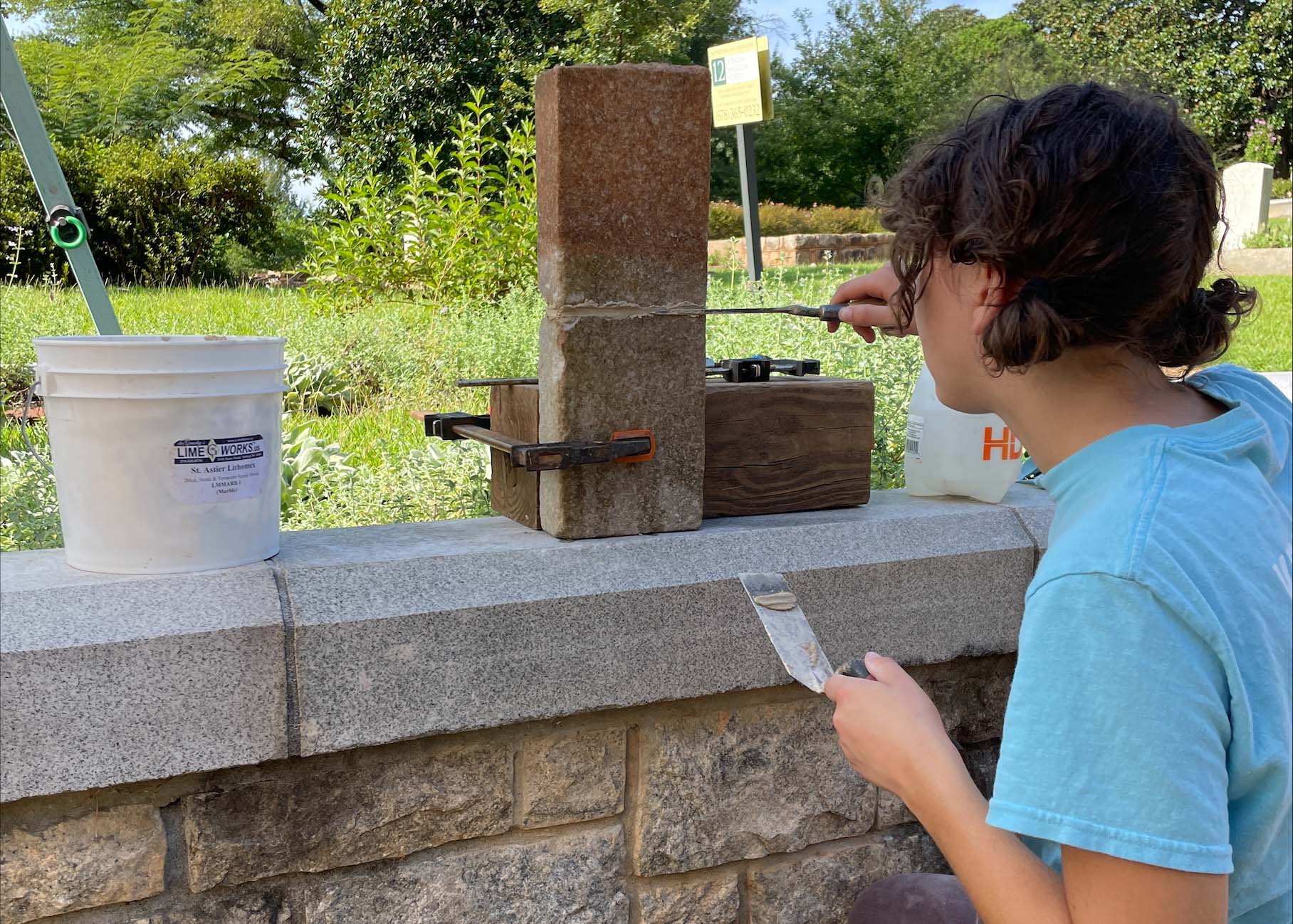
Cold Weather brings Preservation Challenges
As the weather begins to cool off this Fall, the Preservation, Restoration, and Operations (PRO) team is transitioning to a different season of preservation work. During extreme weather, either very hot or very cold, we abstain from using mortars. That makes rebuilding and repointing walls and large outdoor headstone repairs out of the question. You may be thinking, “Atlanta doesn’t get THAT cold, and I see construction workers building with brick all winter long!”. With historic stone and brick, we have to be more careful with the methods and materials we use.
In past blog posts, we’ve talked about how we use lime mortar a lot. Lime mortar is softer, flexible, and sympathetic to older stones. It is also slow-curing. That means that even if it’s 50 degrees during the day when we lay the mortar, any temperatures below freezing for the next several weeks can ruin the mortar’s curing process. Commercial cements set much faster, so if we are using a modern mortar mix, we have more wiggle room. A great example of this would be laying a brand new section of brick pathway with modern brick.

So what DO we do when the weather is cold? Anything that doesn’t involve the outdoor usage of mortar. We re-set headstones year-round. We can even pour concrete bases as long as we have a full 36 hours of above-freezing temps. Warm water helps with this, too!
Working outdoors in freezing temperatures can pose other challenges, and we have found ways to combat them: When the ground freezes, digging is more arduous, so we sharpen our shovels in order to cut through the hard ground. We avoid working on high points in the cemetery when it is windy. We keep dirt piles covered to prevent frost from forming and making the soil harder to work with.

When all else fails and the weather is too miserable to work in, we have two options: First, we can work indoors repairing small headstones and urns in a temperature-controlled environment. Or we can utilize these days for education—reading articles from the National Center for Preservation Technology and Training, Association for Preservation Technology, and other preservation authorities or watching YouTube videos from experts in the field. No matter what the weather brings us, Historic Oakland Foundation’s preservation and restoration (PRO) team finds a way to work through it and keep preservation work at Oakland moving along!



